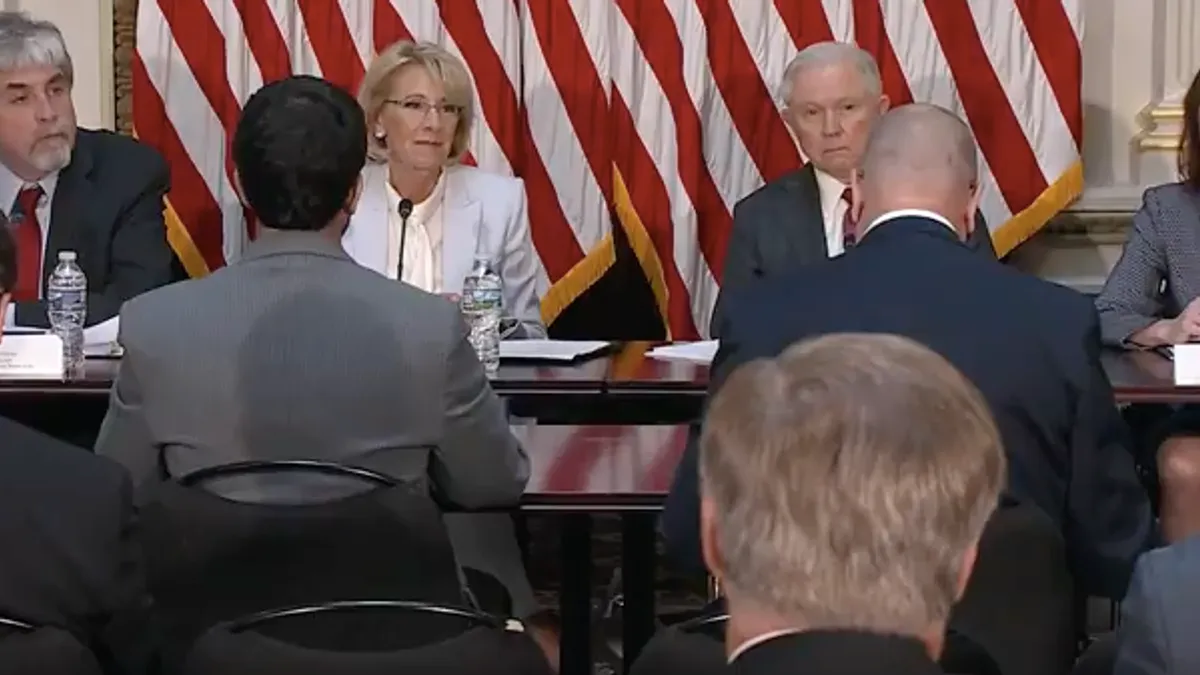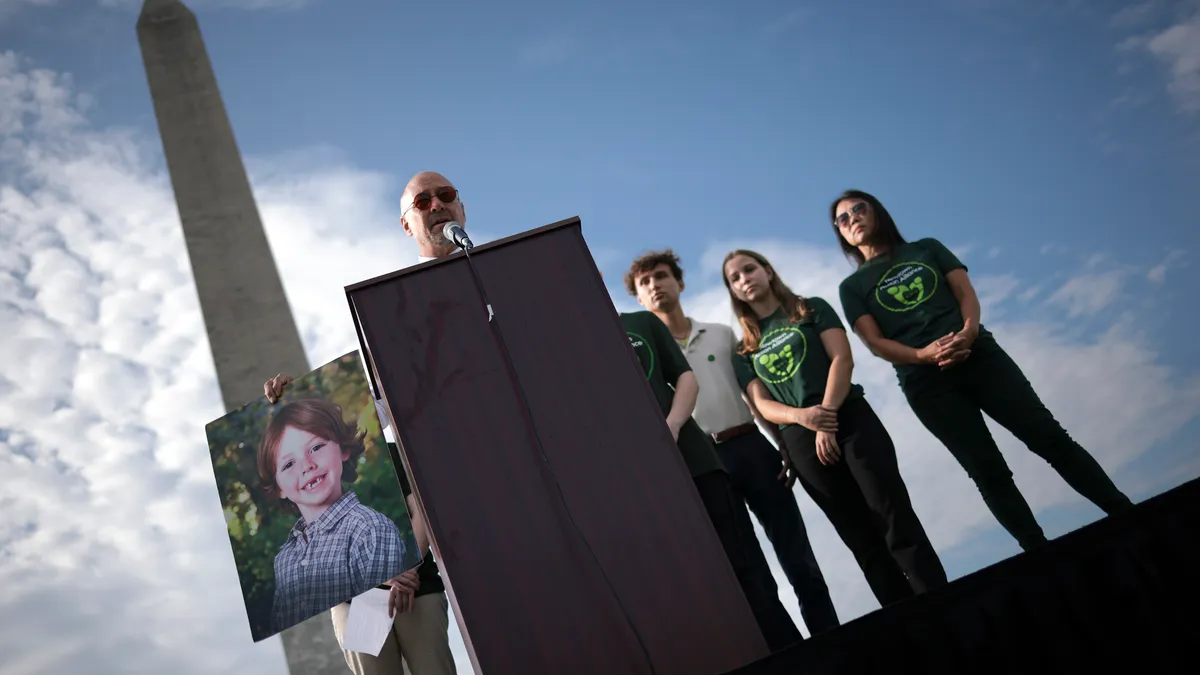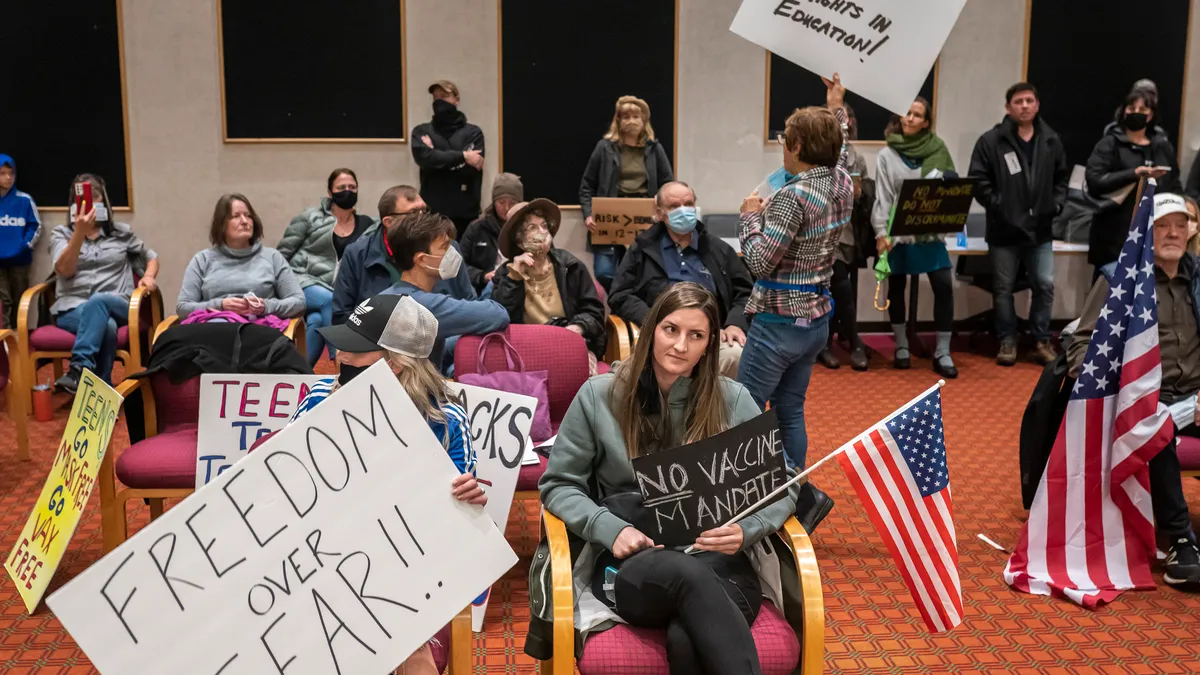UPDATE: Dec. 18, 2018: The federal safety commission’s report “passes the buck” to states and recommends practices that the majority of districts can’t afford, the AASA, The School Superintendents Association, said in a response.
Urging states to adopt “extreme risk protection orders” that would remove firearms from individuals who are a danger to themselves and others, “modernizing” the Family Educational Rights and Privacy Act to allow for better communication between agencies, and creating incentives for veterans and former law enforcement personnel to transition to careers in education are among the 100 policy recommendations the Federal Commission on School Safety issued Tuesday.
“No parent should fear for their child’s life when they go to school,” U.S. Secretary of Education Betsy DeVos, who chaired the commission, said on a press briefing call. “Too many families have faced these horrible challenges.”
The 19-chapter report, compiled after several months of listening sessions and site visits, also advocates having “highly trained” armed school personnel, including teachers — particularly in communities where law enforcement can’t respond quickly enough — but does not call for using federal funds to purchase weapons, administration officials said.
DeVos said that the report stresses that there are no universal solutions and that “local problems need local solutions.” She urged the media to participate in the No Notoriety campaign and refrain from publishing the names and photos of school shooters.
A senior White House official also stressed that stronger partnerships between schools and law enforcement agencies are needed to avoid situations in which an armed school employee trying to protect students is in danger of being shot when the police arrive. He said that the commission learned that schools often have no relationship with local law enforcement, or “not one that is functioning.”
Decision on discipline guidance
As indicated last week, the report also recommends rescinding Obama-era discipline guidance that sought to eliminate racial disparities in out-of-school suspensions. The recommendation, the official said, is based on a “recurring narrative” of students being afraid that peers with a history of antisocial or aggressive behavior were going unpunished.
But civil rights advocates lobbied heavily at the commission’s sessions for maintaining the guidance, citing data showing that students of color are far more likely to be suspended and to attend schools with a larger police presence.
“DeVos is taking us backwards, worsening the school-to-prison pipeline. Returning to zero-tolerance discipline policies that push students out of school and into the criminal justice system will create the hostile environments that make schools less safe,” Judith Browne Dianis, executive director of Advancement Project’s national office, said in a press release.
In an interview, Jaime Koppel, the deputy director of strategic partnerships with the Communities for Just Schools Fund — a donor collaborative that focuses on positive school climate efforts — suggested that some schools would likely use the rollback of the guidance to justify suspending students, while others will continue “to lean on it” to shape how they respond to behavior issues. Koppel, who testified at the commission’s first listening session, added, however, that the administration’s position that the guidance was an overreach of the federal government while at the same time stipulating schools can use federal funds for more school resource officers shows that the commission listened to “privileged select voices whose messages match their interests.”
The National Association of State Boards of Education, the American Educational Research Association and the National Education Association were also among the multiple groups expressing disappointment in the recommendation to rescind the guidance.
But Sasha Pudelski, AASA’s advocacy director, said in an interview that the organization’s survey of 950 school leaders, showed that only 16% of them changed any discipline practices in response to the guidance. She added that the commission’s report, which includes quotes from that survey, misrepresents some of the survey’s findings and that what has been more problematic is how the Office for Civil Rights handled investigations into schools’ discipline practices. She said some probes into individual cases “morphed into districtwide investigations,” “lasted multiple years” and negatively affected staff morale. Rescinding the guidance doesn’t address those concerns, she said.
Students, including those from Marjory Douglas Stoneman High School in Parkland, Florida — where the February mass shooting that prompted President Donald Trump to form the commission took place — staged large demonstrations throughout the spring, calling for more gun control measures, such as raising the minimum age for purchasing guns.
“Safety does not mean more police in schools, more metal detectors and armed teachers. Safety means to get to the root causes of a student's misbehavior,” Amina Henderson-Redwan, a youth leader with Voices of Youth in Chicago Education who also testified before the commission, said in a press release. “This Federal Commission on School Safety needs to listen to communities that it's supposed to represent, communities like mine.”
Shooters don't buy guns legally
The report also states that analyses of school shootings show that shooters do not frequently use legal purchase as a method for obtaining firearms. "More often, they obtain them from within the home or steal them,” the report says, calling for more research on how to prevent adolescents from gaining access to weapons.
Still, the White House official said, “I don’t think this is a report that runs away from the problem of firearms in the hands of dangerous individuals.” The report’s primary response is to recommend that states implement extreme risk protection order (ERPO) laws.
“Most protection order laws focus on threats directed at the specific person requesting the order. Generalized threats (e.g., against a school) may not qualify under state laws,” the report says. “ERPO laws seek to fill these gaps by providing a temporary mechanism for removing firearms from individuals found by a court to be a danger to themselves or others.”
The recommendations also call for more mental health services in schools, which many states and districts are already implementing. “There is an urgent need to reduce risk for youth mental, emotional and behavioral difficulties through the implementation of efficacious and effective prevention interventions, as well as identify youth at risk for mental illness in schools and connect them with needed treatment and services,” the report says.
The report identifies many existing models of delivering mental health services and calls on federal agencies to help states identify “financing options,” such as Medicaid reimbursement, but does not recommend additional funding for counselors or other mental health professionals.
“If a district cannot afford to hire a mental health provider, it’s hard to imagine how recommendations to adopt comprehensive school-based mental health care services could be meaningfully implemented,” AASA Executive Director Daniel A. Domenech said in a statement. “Similarly, if a district has been unable to afford updating its buildings for 40 years, it’s impossible to imagine they would be well-served by a recommendation to limit entry points by rerouting roads or eliminating access points to the building.”
The administration official added that the formation of the commission and the release of the report were the first two phases of the administration’s work on the issue of school safety, and now they will focus on implementation. In a tweet Tuesday, Rep. Virginia Foxx, R-North Carolina, who chairs the House Committee on Education and the Workforce, said “We want children to be safe, and we will give serious consideration to these important recommendations as we continue to work toward that shared goal.” But with Democrats taking control of the U.S. House of Representatives in January, implementation of the plan is likely to face obstacles.
The official added he did not want the report to be viewed as Republican and that it is “reflective of all kinds of individuals of different walks of life. In that sense, it’s an American report.”





















